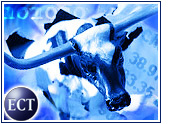
With the economy still on the skids and technology stocks taking the biggest hit, one might think the time is right for investors to take advantage of bargain-basement prices and sink their dollars into tech-heavy funds, including index funds and managed funds.
But that is not necessarily true. Even though technology has taken a body blow in the stock market, “prices on many tech stocks still aren’t that low; they’re just a lot lower than they were two years ago,” Mark Sellers, editor of the Morningstar StockInvestor, told the E-Commerce Times.
And Christopher Traulsen, an analyst with Morningstar.com, told the E-Commerce Times that tech-heavy funds simply are not growing at the same wild rate as they were a few years ago. “The average tech fund was up 134.2 percent in 1999 after being up 52.7 percent in 1998,” he explained. In comparison, “the average tech fund is down 54.3 percent this year.”
Smart Investing
“That doesn’t mean people should avoid growth funds altogether,” Sellers said.
Likewise, Gartner analyst Avivah Litan told the E-Commerce Times that market volatility is dissipating somewhat, and “we’re now on a steady, slow growth curve that is much more rational in nature.”
Indeed, some funds are performing at least steadily, if not well. Traulsen named PIMCO RCM Global Technology as a fund to watch. “It is a well-diversified offering,” he said. “It keeps its assets reasonably spread.”
Fidelity’s select technology fund also has been consistent. While Traulsen noted that the fund changes management frequently — Fidelity uses its sector fund for manager training — it is well administered and stable. “Usually, I don’t like to see management changes. It’s a wary sign,” he said. But in this case, Fidelity “benchmarks the fund against internal benchmarks.” And by using the fund as a training ground, Fidelity has built an impressive roster of technology experts worldwide.
In addition, he added, Northern Technology is “usually good. There’s a lot of experience on the management team.”
Smart Investing
“Investors should be careful to avoid ‘performance chasing,’ which inevitably results in underperforming the market over the long term,” said Sellers. “Many investors have a habit of buying high and selling low by chasing what was has done well in the recent past. Over the trailing one, three, five, 10 and 15-year periods, growth has underperformed value.”
While Sellers noted that the trend will probably reverse eventually, the timing of that reversal “is anyone’s guess.” He also cautioned that “growth and tech aren’t necessarily the same thing.”
In fact, many so-called tech-heavy funds that have performed well recently have done so by operating outside their original mandate. Some are “holding 40 to 50 percent in cash,” and some are investing in industries like healthcare and media, said Traulsen.
Too Much of a Good Thing
In such an uncertain climate, investors can follow a few guidelines that will make their decisions more prudent. First and foremost, they need to diversify. “In the late ’90s, a lot of people became enamored” with technology and started snapping it up, Traulsen said. But “they didn’t realize that their core funds [included] a huge amount of technology.”
He advised investors to determine their existing exposure to technology before committing to a tech-heavy fund. And, as always, some age-old wisdom holds true: Investors should focus on long-term rather than short-term gains — even in technology.















































Social Media
See all Social Media